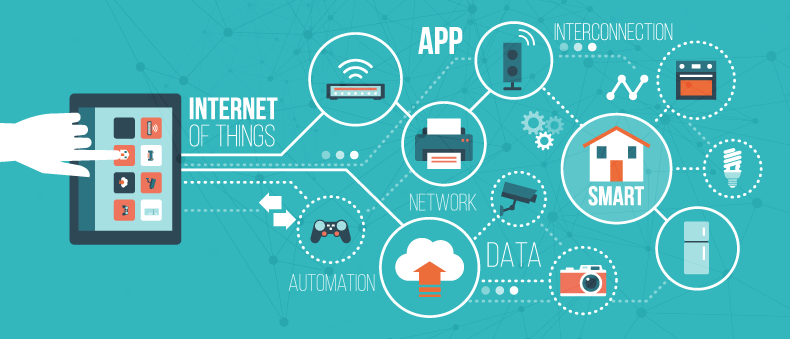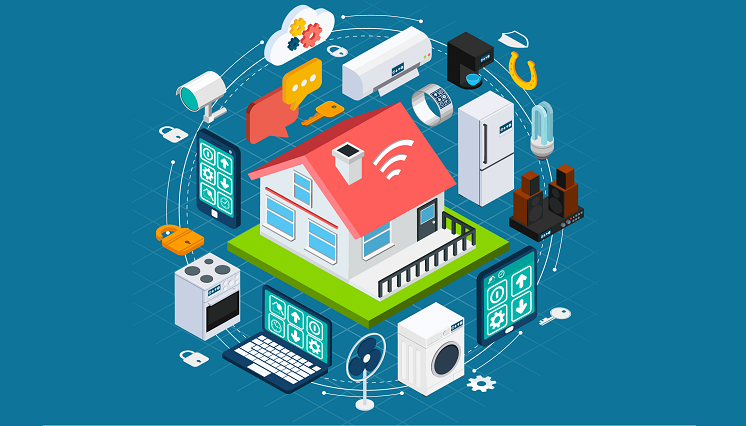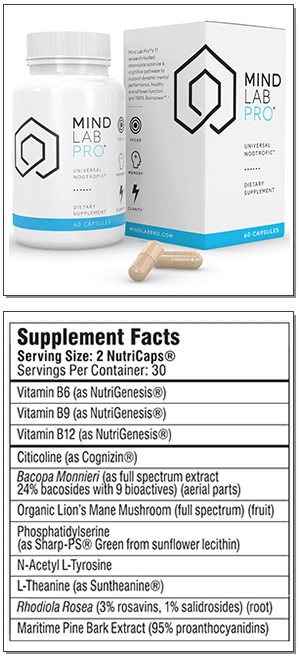
IS THE INTERNET OF THINGS (IOT) THE FUTURE OF TECHNOLOGY?
The Internet of Things, or IoT, makes once “dumb” devices “smarter” by giving them the ability to send data over the internet, allowing the device to communicate with people and other IoT-enabled things. IoT is a catch-all term for the growing number of electronics that aren’t traditional computing devices, but are connected to the internet to send data, receive instructions or both.
What Is the Internet of Things (IoT)?
In the simplest terms, the Internet of Things (IoT) is how we describe the digitally connected universe of everyday physical devices. These devices are embedded with internet connectivity, sensors and other hardware that allow communication and control via the web.
There’s an incredibly broad range of things that fall under that umbrella: Internet-connected “smart” versions of traditional appliances like refrigerators and light bulbs; gadgets that could only exist in an internet-enabled world like Alexa-style digital assistants; internet-enabled sensors that are transforming factories, healthcare, transportation, distribution centers and farms.
The connected “smart home” is a good example of IoT in action. Internet-enabled thermostats, doorbells, smoke detectors and security alarms create a connected hub where data is shared between physical devices and users can remotely control the “things” in that hub (i.e., adjusting temperature settings, unlocking doors, etc.) via a mobile app or website.

The IoT brings the power of the internet, data processing and analytics to the real world of physical objects. For consumers, this means interacting with the global information network without the intermediary of a keyboard and screen; many of their everyday objects and appliances can take instructions from that network with minimal human intervention.
Far from being restricted to just the home, the Internet of Things can be found in an array of devices, industries and settings. From smart blackboards in school classrooms to medical devices that can detect signs of Parkinson’s disease, IoT is rapidly making the world smarter by connecting the physical and the digital.
In a nutshell, IoT works in the following way:
- Devices have hardware like sensors, for example, that collect data
- The data collected by the sensors is then shared via the cloud and integrated with software
- The software then analyzes and transmits the data to users via an app or website
The basic elements of the IoT are devices that gather data. Broadly speaking, they are internet-connected devices, so they each have an IP address. They range in complexity from autonomous vehicles that haul products around factory floors to simple sensors that monitor the temperature in buildings. They also include personal devices like fitness trackers that monitor the number of steps individuals take each day. To make that data useful it needs to be collected, processed, filtered and analyzed, each of which can be handled in a variety of ways.
IoT Products and Developments
Essentially, anything that’s capable of gathering some information about the physical world and sending it back home can participate in the IoT ecosystem. Smart home appliances, RFID tags, and industrial sensors are a few examples. These sensors can monitor a range of factors including temperature and pressure in industrial systems, status of critical parts in machinery, patient vital signs, and use of water and electricity, among many, many other possibilities.
Pretty much any physical object can be transformed into an IoT device if it can be connected to the internet to be controlled or communicate information.
A light bulb that can be switched on using a smartphone app is an IoT device, as is a motion sensor or a smart thermostat in your office or a connected streetlight. An IoT device could be as fluffy as a child’s toy or as serious as a driverless truck. Some larger objects may themselves be filled with many smaller IoT components, such as a jet engine that’s now filled with thousands of sensors collecting and transmitting data back to make sure it is operating efficiently. At an even bigger scale, smart cities projects are filling entire regions with sensors to help us understand and control the environment.

Even those who have purchased one of the myriad smart home products – from light bulbs, switches, to motion sensors – will attest to the fact IoT is in its infancy. Products don’t always easily connect to each other and there are significant security issues that need to be addressed.
Entire factory robots can be considered IoT devices, as can autonomous vehicles that move products around industrial settings and warehouses.
Other examples include fitness wearables and home security systems. There are also more generic devices, like the Raspberry Pi or Arduino, that let you build your own IoT end points. Even though you might think of your smartphone as a pocket-sized computer, it may well also be beaming data about your location and behavior to back-end services in very IoT-like ways.
Business-Ready, SaaS IoT Applications
IoT applications are pre-built software-as-a-service (SaaS) applications that can analyze and present captured IoT sensor data to business users via dashboards.
IoT applications use machine learning algorithms to analyze massive amounts of connected sensor data in the cloud. Using real-time IoT dashboards and alerts, you gain visibility into key performance indicators, statistics for mean time between failures, and other information. Machine learning–based algorithms can identify equipment anomalies and send alerts to users and even trigger automated fixes or proactive counter measures.
With cloud-based IoT applications, business users can quickly enhance existing processes for supply chains, customer service, human resources, and financial services. It can even help building a cohesive business identity. There’s no need to recreate entire business processes.
Consumer and Enterprise IoT Applications
There are numerous real-world applications of the internet of things, ranging from consumer IoT and enterprise IoT to manufacturing and industrial IoT (IIoT). IoT applications span numerous verticals, including automotive, telecom and energy.
In the consumer segment, for example, smart homes that are equipped with smart thermostats, smart appliances and connected heating, lighting and electronic devices can be controlled remotely via computers and smartphones.
Wearable devices with sensors and software can collect and analyze user data, sending messages to other technologies about the users with the aim of making users’ lives easier and more comfortable. Wearable devices are also used for public safety — for example, improving first responders’ response times during emergencies by providing optimized routes to a location or by tracking construction workers’ or firefighters’ vital signs at life-threatening sites.
